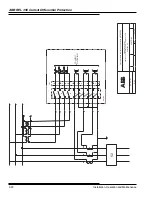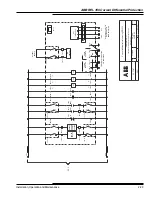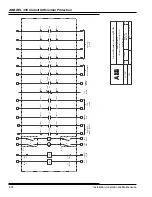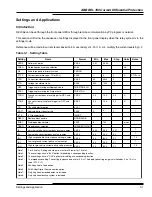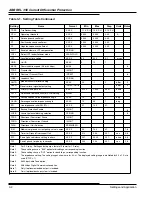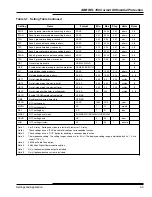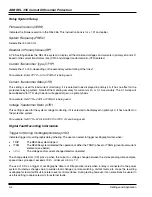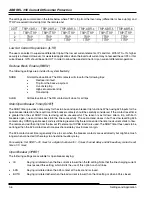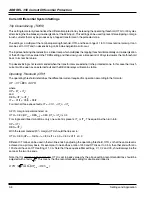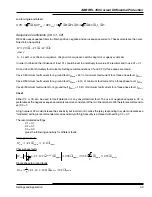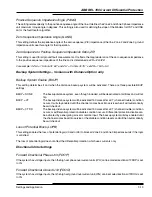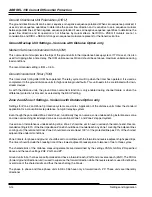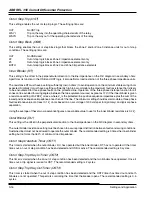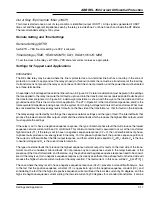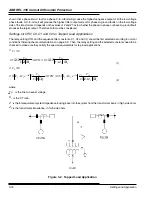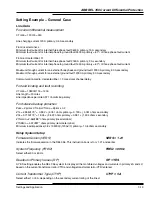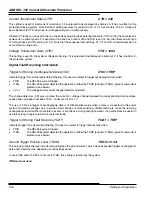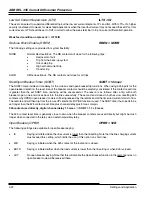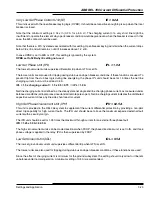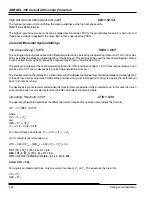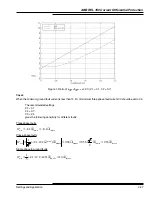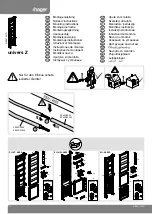
ABB REL 356 Current Differential Protection
3-12
Settings and Application
Communication Speed Selection (KBPS) – 56/64 kbps versions only
This setting allows 56 kbps or 64 kbps communication speed selection. This setting should be coordinated with any
external communication multiplexer used in the system. A vast majority of applications are 64 kbps.
Transfer Trip (TTRP)
The transfer trip function as initiated by a contact closure (TB5 9 to 10) can be enabled or disabled (IN or OUT).
When enabled (TTRP = IN), contact closure will result in transmission of transfer trip code to the remote end. When
received at the remote unit for at least 10 msec, tripping will take place. The remote REL356 will close either its basic trip
contacts, and/or contacts on the extended output board as determined by the setting DDTT.
Transmit clock source (XCLK) – 56/64 kbps versions only
This setting establishes the source of the transmit data clock. If XCLK = EXT, the transmit data clock is extracted from
the received data stream. If XCLK = INT, the clock originates from the internal crystal clock oscillator.
For systems using external multiplexers (T1 or E1 type) the setting should be XCLK = EXT. Note that the data clock is
extracted from the received data stream so that no connection to any “clock” output on the multiplexer is needed.
For systems using dedicated fiber (850 nm or 1300 nm) the setting should be XCLK = INT.
Loopback (LPBK)
This setting should be LPBK = NO during normal operation.
The LPBK setting is only set to YES for testing when the relay is connected in loopback mode, i.e. the communication
wires are cross connected so that the relay communicates with itself. Loopback mode disables the automatic channel
delay measurement and unit ID check as these can no be performed during loopback condition.
Transmitter Level (XMTR) – Audiotone version only
This setting defines the output power from the unit’s transmitter in –dBm. It should be set in accordance with specifica-
tions for the channel used. For metallic pilot wire applications, the maximum setting is recommended, i.e. –1 dBm.
Receiver Level Signal Detector (RLSD) – Audiotone version only
This setting defines the minimum threshold for declaring channel trouble (CHTB) in –dBm.
Fault Locator and Distance System Common Settings
Ohms per Unit Distance (XPUD)
This setting is used by the fault locator algorithm to estimate a calculated distance to the fault. The units of XPUD will
be in primary ohms per mile or kilometer, depending on the setting of DTYP.
For example: Set XPUD = 0.8 if DTYP = MI and the line reactance is 0.8 primary ohms/mile.
Distance Unit Type (DTYP)
Either miles (MI) or kilometers (km) can be selected. This setting should match the units used in XPUD.
Содержание REL 356
Страница 23: ...ABB REL 356 Current Differential Protection 1 10 Product Overview and Specifications ...
Страница 83: ...ABB REL 356 Current Differential Protection 3 36 Settings and Application ...
Страница 127: ...ABB REL 356 Current Differential Protection 5 28 Testing ...
Страница 186: ...LINE SECTIONALIZING USING A PLC AND ABB PROTECTIVE RELAY Page 49 of 53 ...
Страница 187: ...LINE SECTIONALIZING USING A PLC AND ABB PROTECTIVE RELAY Page 50 of 53 ...
Страница 188: ...LINE SECTIONALIZING USING A PLC AND ABB PROTECTIVE RELAY Page 51 of 53 ...
Страница 189: ...LINE SECTIONALIZING USING A PLC AND ABB PROTECTIVE RELAY Page 52 of 53 ...

